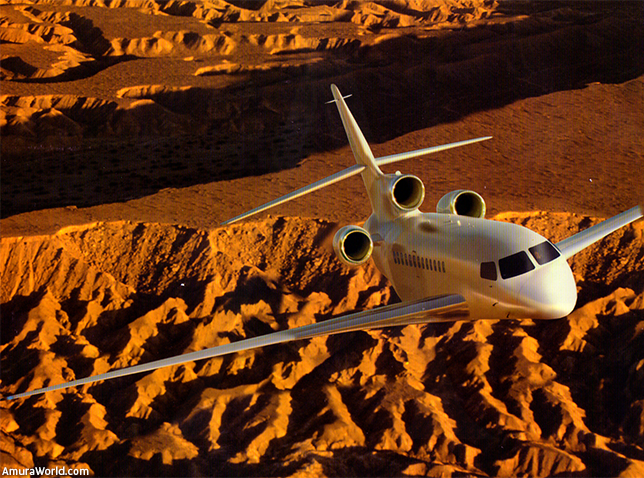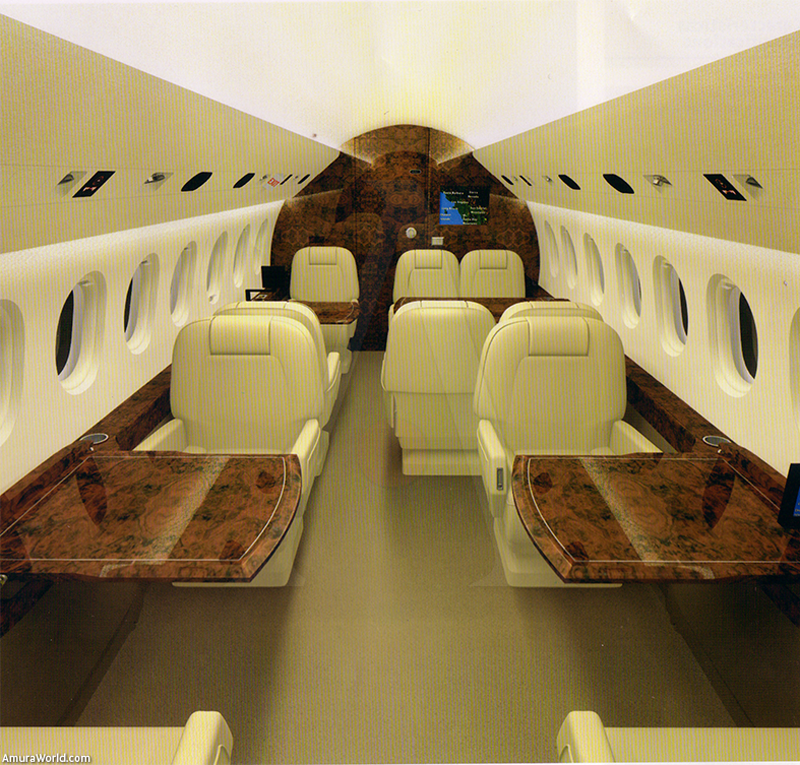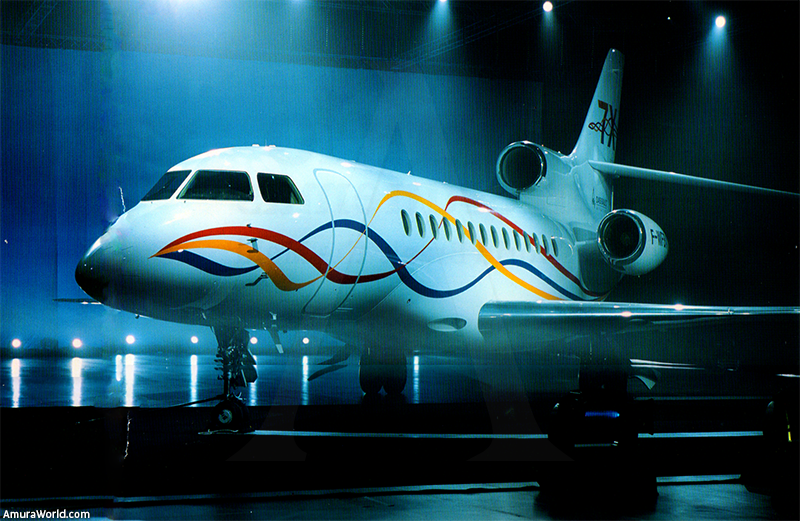New Generation
When it seemed that everything had already been written about the world of corporate jets, the French firm Dassault Aviation made the first test flight of the Falcon IX. Three Pratt & Whitney motors will power the jet with a thrust of 6,100 pounds each, including the new noise reductions standards anticipated for the next two decades.
The jet can comfortably carry 19 passengers to almost any part of the world, in point to point flights.
The first test flight took off from the Bordeaux Merignac airport, in southeast France. It landed one hour and 36 minutes later, after completing a flight plan during which resistance, speed and avionics tests were performed, particularly of the electric flight commands used for the first time in a corporate jet.
After take off, the jet, with registration number F-WFBW, soared to 10,000 feet, where various system checks were carried out on the hydraulic, fuel and air data systems as well as the landing gear. Acceleration and deceleration tests were executed at 25,000 feet and the automatic pilot and automatic acceleration operations where checked.
With this model, Dassault writes a fresh page in its history, presenting a new generation jet which has distinguishing transonic characteristics and optimum slower speed capacity. The innovative design of its wings duplicates its L/D (lift/drag) yield.
After three years of rigorous design, utilizing the most sophisticated techniques in the industry, Dassault Falcon Jet presents an authentic novelty in design: a new generation of transonic wings for the private, ultra-long 7X jet.
During the test flight several measurements of parameters were taken: 3,000 were digital and 1,000 were analog. The Falcon 7X is the first corporate jet equipped with the Fly-by-Wire control system.
This initial test run was piloted by Yves KerhervG, flight crew director, and Philippe Deleume, chief of test pilots, who reached a maximum altitude of 25,000 feet (7,600 meters) at a cruising speed of 280 knots (518 kilometers/hour/321 miles/hour). Flight tests will continue during the next 15 months.
The next test took place in the Dassault Test Center in Istres, France, during the second half of this year. The third flight will take place this summer. For the flight, the jet will already have been outfitted with a full interior and noise tests will be performed inside. It is expected that the Falcon 7X will have 1,200 flight hours before receiving certification from the USA'S FAA (Federal Aviation Administration) and the EASA (European Aviation Safety Agency) which will give it the necessary authorization to fly to any part of the world. Static and structural fatigue tests are being carried out in CEAT, in Toulouse, since last March.
Presented in February
Once in service, owners of the tri-reactor Falcon 7X will enjoy a radius of action of 10,500 kilometers(6,524 miles) at .90 Mach speed at 15,000 meters(49,212 feet) altitude. The European manufacturer presented the first model to the public in February.
Charles Edelstenne, chairman of the company, said they hope to sell between 300 and 400 models in the ever-growing private jet market.
“Marcel Dassualt’s pioneering spirit lives on today", he added, with regard to the first test. "This spirit imbues every one of the engineers, partners, clients and test flight team that made this spectacular flight possible. I am sure that this day will be remembered always”.
“Our clients are as visionary as we are and that iswhy they want the Falcon IX. Without their support and confidence nothing would be possible,” said John Rosanvallon, chairman and CEO of Dassault Falcon Jet. “Since our initial launching, the demand
for this model has been big. We have 50 signed orders with prospective clients. This jet has a very bright future".
The Falcon 7X‘s history began in 2001 when, during the Paris Air Show that year, there was an official presentation of it jot that promised a range of 3,700 nautical miles (10,500 kilometers). Even before it made its first flight the company had 50 orders.
It is expected that the certification process and standard production will take a couple of years.
Interest in delivery has spurred a need to optimize the manufacturing process, increasing production from 2.5 to 3 models per month
The Falcon 7X has a catalog price of between 37 and 39 million dollars, depending on its accessories. This is a 10% price increase over the Falcon 900X, till now the most luxurious business jet built by Dassault, a leading manufacturer in this sector, with 40% more sales than their closest competitors, Gulfstream, of the USA, and Bombardier, of Canada.
|
DISTANCES |
|
Paris eastbound Tokio, Beijing, Johannesburg Los Angeles, Mexico City, Sao Paulo All Europe, Riyadh (Saudi Honolulu, Petropavlovsk San Francisco eastbound |
|
LUXURIOUS DETAILS |
|
Three rest areas, bathroom, Dassault intuitive flight cabin Four 14.1” flat-panel screens offer |
|
SINCE 1963 |
|
Since the presentation of the |
Text: Laura Velázquez ± Photo: Dassault Aviation



